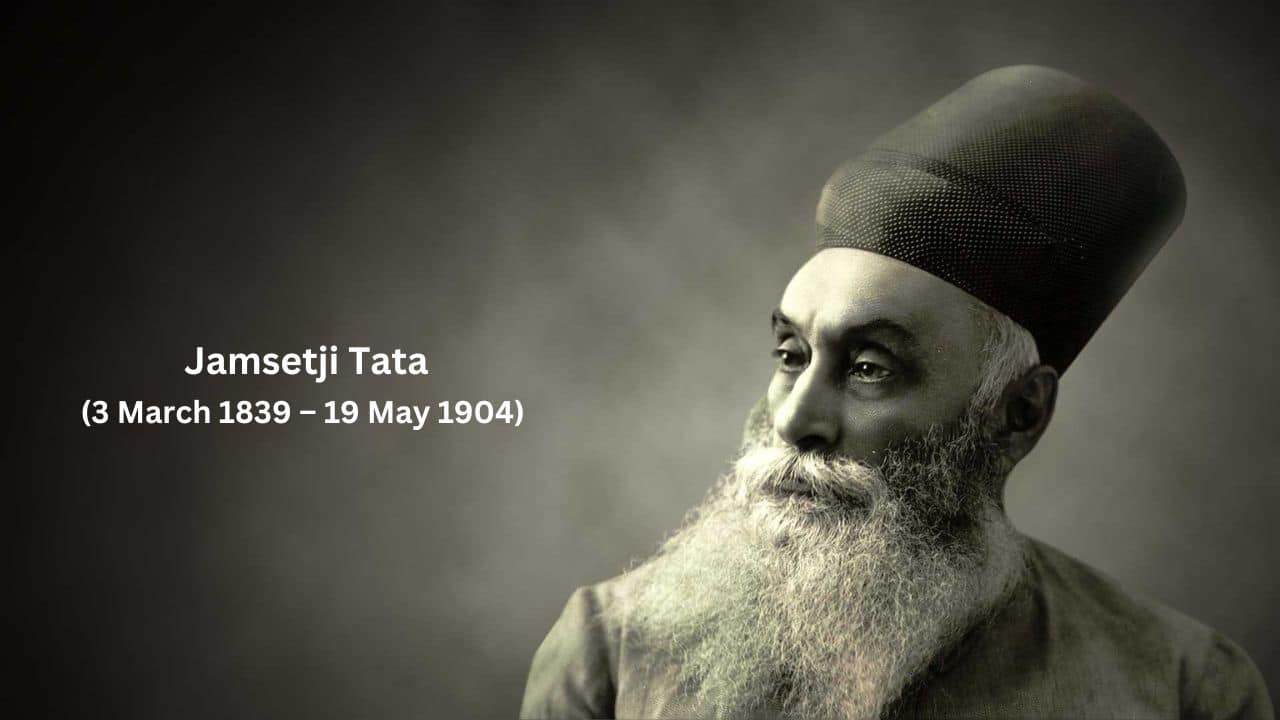Jamsetji Tata Biography
Jamsetji Tata, one of India’s most celebrated industrialists and philanthropists, needs no introduction.
His legacy as a visionary entrepreneur, a pioneer of India’s industrial revolution, and a tireless champion of social causes has endured for over a century.
Born in Navsari, Gujarat, in 1839, Jamsetji Tata’s entrepreneurial journey began when he founded a small trading company in Bombay at the age of 29.
With a keen eye for opportunity and a deep commitment to innovation, he soon diversified into cotton mills, iron and steel, and hydroelectric power, establishing the foundations of what would become the Tata Group, one of India’s largest conglomerates.
Despite numerous setbacks and challenges, Jamsetji remained undaunted, driven by a singular vision to create a better future for India.
Today, his pioneering spirit lives on in the Tata Group’s many enterprises, from automotive to aviation, and in the countless lives touched by his philanthropic initiatives.
Join us as we explore the inspiring journey of Jamsetji Tata and discover the lasting impact of his visionary legacy.
Early Life and Education
Jamshedji Tata was born to Nusserwanji and Jeevanbai Tata on March 3, 1839, in Navsari, a city in southern Gujarat.
His family, part of the Zoroastrian Parsi community, had sought refuge in India to escape persecution in Persia (now Iran).
Born into a respectable yet poor family of priests, Jamshedji broke away from the priestly tradition to become the first businessman in his family.
His father, Nusserwanji Tata, had already taken this step, starting an export trading firm in Mumbai. Jamshedji’s mother tongue was Gujarati.
Unlike many of his contemporaries, Jamshedji received a formal Western education due to his parents recognizing his exceptional abilities in mental arithmetic.
To further his education, he was sent to Bombay (now Mumbai) at the age of 14, where he enrolled at Elphinstone College and graduated as a “Green Scholar” in 1858, the equivalent of a graduate today.
During his college years, he married Hirabai Daboo.
Early Career and Business Ventures
After graduating, Jamshedji joined his father’s export-trading firm, helping to establish its branches in Japan, China, Europe, and the United States.
This period was challenging as the Indian Rebellion of 1857 had just been suppressed by the British.
Nusserwanji often traveled to China, becoming acquainted with the opium trade prevalent among a small colony of Parsees.
He intended for Jamshedji to join this business and sent him to China to learn the trade. However, during his travels, Jamshedji saw the potential of the booming cotton industry.
Jamshedji worked in his father’s company until he was 29. In 1868, he founded his own trading company with a capital of ₹21,000.
He soon bought a bankrupt oil mill in Chinchpokli, converted it to a cotton mill, and named it Alexandra Mill.
He sold it two years later for a profit. In 1874, he established the Central India Spinning, Weaving, and Manufacturing Company in Nagpur.
This move was initially criticized as Bombay was known as the “Cottonopolis” of India, but Jamshedji’s decision proved wise.
Nagpur offered cheap land and abundant resources, and soon became a key industrial hub, aided by the convergence of railways.
In 1877, he established the Empress Mill in Nagpur, named in honor of Queen Victoria’s proclamation as the Empress of India.
His decision to focus on Nagpur instead of Bombay allowed him to leverage cheaper resources and better logistics, ultimately leading to success.
Major Projects and Vision
Jamshedji Tata had four major goals: to establish an iron and steel company, create a world-class educational institution, build a unique hotel, and set up a hydroelectric plant. During his lifetime, only the hotel project came to fruition.
The Taj Mahal Hotel at Colaba waterfront in Mumbai opened on December 3, 1903, at the cost of ₹11 million. It was the first hotel in India to have electricity.
In 1885, Tata started a company in Pondicherry to distribute Indian textiles to French colonies without paying duties.
Although this venture failed, it led him to buy Dharamsi Mills in Bombay, which he later sold to buy Advance Mills in Ahmedabad.
The high-tech Advance Mills had a significant impact on the city, integrating the mill within the community and boosting local economic growth.
Jamshedji also supported the Swadeshi Movement, which promoted the production of domestic goods and the boycott of imported goods.
His Swadeshi Mill in Bombay aimed to produce finer cloth comparable to Manchester’s renowned textiles.
Philanthropy
Jamshedji Tata was a notable philanthropist, donating generously to education and healthcare.
He was named the greatest philanthropist of the 20th century by EdelGive Foundation and Hurun Research India, with estimated donations of $102 billion adjusted for inflation.
He established the J.N. Tata Endowment in 1892 to support higher education for Indian students and laid the groundwork for the Indian Institute of Science (IISc) in Bangalore, which was established in 1909.
Personal Life and Death
Jamshedji Tata married Hirabai Daboo and had two sons, Dorabji Tata and Ratanji Tata, who succeeded him as chairmen of the Tata Group.
His first cousin, Ratanji Dadabhoy Tata, also played a significant role in the Tata Group’s establishment.
Jamshedji’s family included notable figures such as Shapurji Saklatvala, a Communist Member of the British Parliament, and J.R.D. Tata, an eminent entrepreneur.
While on a business trip to Germany in 1900, Tata became seriously ill. He died in Bad Nauheim on May 19, 1904, and was buried in the Parsi burial ground in Brookwood Cemetery, Woking, England.
Legacy
Jamshedji Tata’s legacy is profound. His iron and steel plant was set up in Sakchi village, Jharkhand, which later became Jamshedpur in his honor.
The Tata Group, founded by him, grew into a global enterprise adhering to his principles.
Tata Steel, Tata Power, and the Indian Institute of Science are testaments to his visionary leadership.
His life and work have left a lasting impact on India’s industrial and social landscape, demonstrating how vision and perseverance can transform a nation.
Lessons we can learn from Jamsetji Tata’s journey
Jamsetji Tata’s journey offers valuable lessons for aspiring entrepreneurs and business leaders.
His relentless pursuit of his vision, his unwavering commitment to excellence, and his deep sense of social responsibility are traits that can inspire and guide future generations.
💠 First and foremost, Jamsetji Tata teaches us the importance of having a clear vision. He had a grand vision for India’s industrial development and worked tirelessly to bring it to fruition.
Having a clear vision enables entrepreneurs to stay focused and motivated, even in the face of challenges.
💠 Secondly, Jamsetji’s commitment to excellence is a lesson in itself. He never compromised on quality and always strived to deliver the best.
This commitment to excellence has been a driving force behind the success of the Tata Group and serves as a reminder that quality should never be compromised.
💠 Lastly, Jamsetji Tata’s philanthropic initiatives remind us of the importance of giving back to society. True success lies not just in personal achievements but in making a positive impact on the lives of others.
By leveraging their resources for the greater good, entrepreneurs can leave a lasting legacy that extends beyond their business ventures.
Also Read: Ratan Tata Family Members: A Summary of the Tata Family Tree








